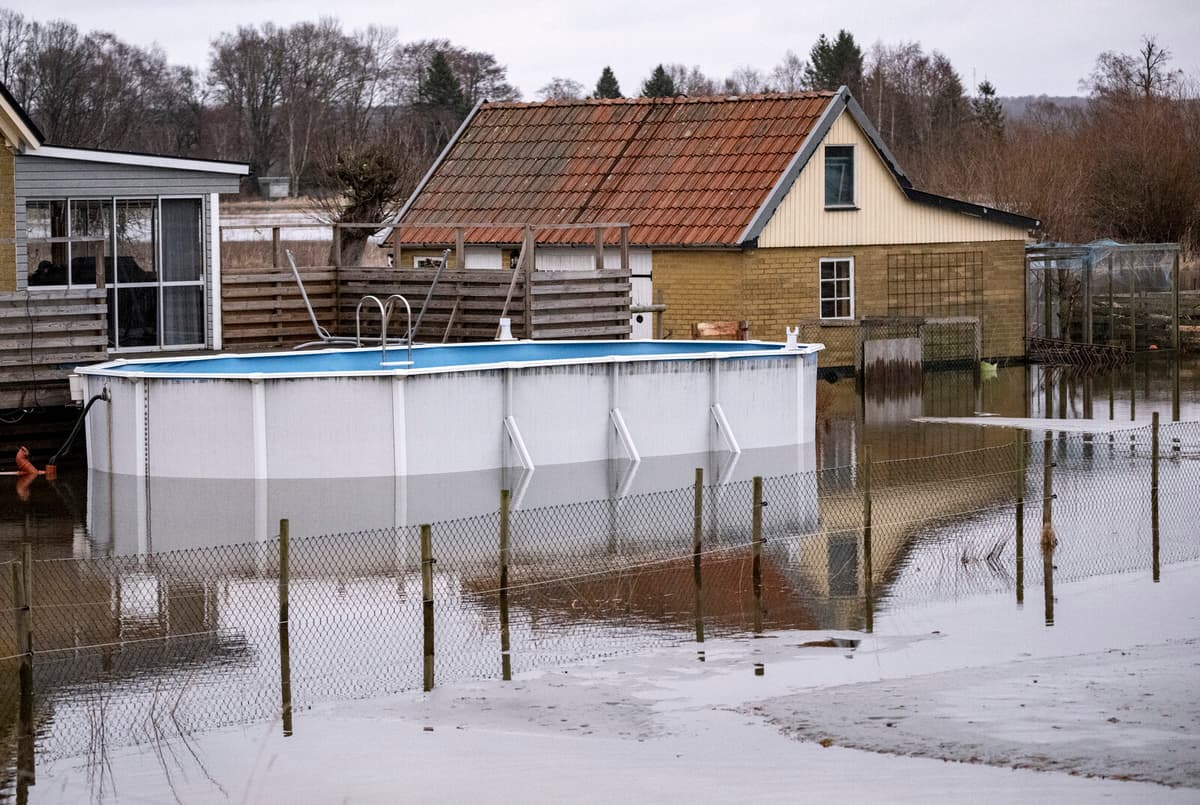When the government's climate adaptation inquiry was recently presented, it came with a suggestion that could force them to pay hundreds of thousands of kronor in fees if the municipality builds away climate risks.
It's good that the climate issue comes to the surface and is made public for many who own houses today. Then I can feel a certain concern that it may hit hard on individual villa owners, says Per Sangrud, sustainability manager at Länsförsäkringar Fastighetsförmedling.
The global warming leads to heavier rainfall and higher water flows in some areas, and drought in other areas in Sweden. The coast is expected to be affected by rising sea levels.
According to Länsförsäkringar Fastighetsförmedling, 55,000 villas have been affected by severe natural disasters in the past five years, resulting in insurance compensation.
"Does not affect me"
In a survey that the company conducted in April among 1,050 new homebuyers, only four percent believed that their own home would be negatively affected by the effects of climate change.
If you don't live in areas that are particularly exposed or have been particularly exposed in recent years, with heavy rainfall and landslides, then the knowledge is quite low, says Sangrud.
A survey conducted by Sweco on behalf of the National Expert Council for Climate Adaptation last year showed that every tenth Swedish home is exposed to climate risks such as landslides, erosion, and flooding – and that did not include risks related to, for example, drought or cloudbursts.
Strong confidence
Lindgren, social policy expert at Villaägarnas riksförbund, believes that villa owners are generally aware of the risks, but that as a property buyer, one may need to be more vigilant.
I think we in Sweden have a strong confidence that this won't happen to us, that it's a strong society, says he.
In some areas, homeowners have started taking matters into their own hands, for example, by building their own protection. Lindgren says it can involve diverting water in the event of flooding and installing back valves that prevent water from flowing up through floor drains.
It's not unreasonable expensive things that a property owner can take in that situation, says he.
Corrected: In an earlier version of the text, the wrong date was mentioned for when the Climate Adaptation Inquiry was submitted.
On May 12, the investigator Johan Hjalmarsson submitted the Climate Adaptation Inquiry 2025 to Climate and Environment Minister Romina Pourmokhtari (L).
One of the proposals is that a municipality, for example, should be able to build a flood protection to protect "a matter of general public interest" – and charge other property owners who benefit.
There must be a "significant risk" of damage to the property in the event of a natural disaster for the fee to be charged, and the risk must cease with the help of the measure. For the property owner, the amount to pay must not exceed 10 percent of the property's market value.
+ Against storms: Make sure that roof tiles are secured and that loose objects such as grills, outdoor furniture, and parasols are anchored or safely stored. Also, make sure that there are no trees or flagpoles that can fall on the house.
+ Against flooding: Check drainage, wells, valves, and sewage where water can enter. Have a drainage pump in the basement if the location is exposed. Ensure that water from ditches and downspouts is led away from the house. Seal roofs, windows, and doors.
+ Against fires: Avoid flammable vegetation such as bushes and trees near the cottage. Have a water hose or pump accessible to humidify the area if needed.
+ Against landslides: Plant deeply rooted trees and bushes in exposed slopes, in exposed cases, soil anchors can be used. Avoid loading slopes with garden waste and parked cars.





